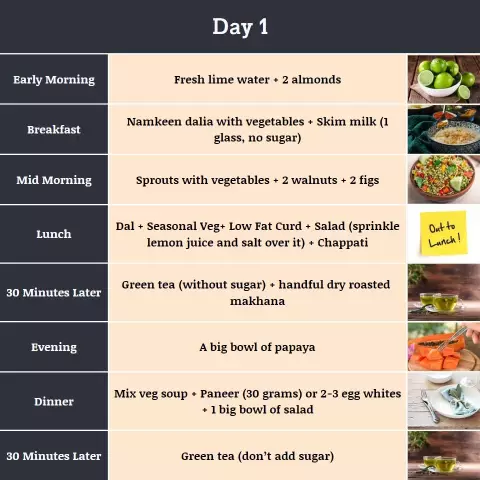- Author Rachel Wainwright [email protected].
- Public 2023-12-15 07:39.
- Last modified 2025-11-02 20:14.
Diet by blood type
The famous American naturopathic physician Peter D'Adamo made a splash in dietetics at one time, putting forward the concept of "four blood groups - four paths to health." He established the relationship between blood groups, which are known to be hereditary, and the characteristics of the body's metabolism and its susceptibility to certain diseases. The theory of Dr. D'Adamo was created not on the basis of scientific research, but on the many years of observations of medical practitioners who came to the conclusion that people with the same blood group are more likely to suffer from certain diseases.
Dr. D'Adamo suggested that the need for certain nutrients is genetically determined, correlates with the blood group. Adhering to the optimal nutritional system for your group, you can gain health, which, among other things, manifests itself in achieving and maintaining an ideal weight. For each blood group, dietary guidelines, a list of desirable and undesirable foods, and recommendations for exercise have been developed.

Source: depositphotos.com
Who are the "Hunters", "Farmers", "Nomads" and "New People"?
The main activity of the most ancient representatives of the human race was hunting. It corresponded mainly to the protein type of nutrition. According to the concept put forward, this led to the formation of a certain genotype, suggesting the first blood group. This type of people Dr. D'Adamo called Hunters. Learn more about the blood type 1 diet.
The second blood group appeared much later, when people learned to cultivate the land. Their type of diet was formed in connection with the use of agricultural products, which is why such people were called Farmers. Their diet should be predominantly plant-based. Learn more about the blood group diet.
People with the third blood group are called Nomads, combining the characteristics of the first two types. For this group, a mixed meat-plant diet is optimal. Learn more about the third blood type diet.
The smallest category is carriers of the fourth blood group. Peter D'Adamo suggested that this is a relatively recent type of people. That's what he called them - "New People". The diet for this group has the most restrictions, the type of food is mixed. Learn more about the fourth blood type diet.
It should be said right away that there is no scientific confirmation of this theory - there is no evidence to support the thesis that living conditions and diet can influence the genotype. On the contrary, it has been scientifically established that the human genotype remains unchanged throughout life and does not depend on the environment, type of activity and food preferences.
The theory of nutrition by blood type has many supporters and opponents. The latter point to the unscientific approach and argue that Dr. D'Adamo's assumptions are simply bold assumptions without evidence. The most radical opponents directly call the American naturopath a charlatan. And the proponents of the theory say that the experience of many doctors cannot be discounted, and although the theoretical basis is really lame, in practice the system still works.
Benefits of a blood type diet
- Dr. D'Adamo's diet involves fractional meals - five to six times a day in small portions. Gastroenterologists and nutritionists agree that this is the optimal eating regimen.
- The diet of the diet for each of the groups contains all the necessary macronutrients - proteins, fats and carbohydrates. A significant proportion of fruits and vegetables in the diet, the general variety of foods make the diet balanced.
- Since most vegetables and fruits must be eaten raw, you can get the most out of them.
- Foods requiring heat treatment are prepared in the most beneficial ways for health - boiling, baking, steaming. It has a beneficial effect on digestion.
- The absence of strict restrictions on the amount of food taken, as well as a fairly wide selection of products, allow a creative approach to the preparation of the menu and focus on your own gastronomic preferences. This makes it much easier to diet, relieves hunger and ultimately allows you to continue the diet for a long time - which, in turn, leads to the formation of new, healthy eating habits.
Thus, all the basic principles of proper nutrition are taken into account in the diet by blood group. Undoubtedly, this diet has a beneficial effect on the body. By wisely limiting daily calories and combining diet with exercise, you can lose weight without harming your health.
Disadvantages and contraindications of the blood type diet
- The theory of Dr. D'Adamo regarding the influence of lifestyle on the human genotype contradicts modern knowledge.
- The relationship between the propensity to certain diseases, the characteristics of metabolism, the need for certain foods and the blood group could not be established.
- Scientists consider the scheme too simplified, dividing all people into four main types according to blood group. They argue that a person's propensity for certain diseases, as well as other parameters of the body, are determined by much more numerous factors.
- Dr. D'Adamo believes that the lack of certain products in the diet should be replenished by taking dietary supplements. Many doctors object to this approach, arguing that dietary supplements are drugs with unproven efficacy, and the very need for their use indicates the inadequacy of the diet.
So, most of the objections concern the academic part of Peter D'Adamo's theory. As for the practical part, all the conditions for a healthy diet are met. If you approach the preparation of the diet responsibly, then it is quite possible to make it complete on the basis of the recommended food groups, and then the need to take dietary supplements will disappear.
Product Lists
For representatives of each of the four blood groups, three separate lists have been drawn up: permitted foods, neutral and prohibited.
Permitted products - the daily menu should mainly consist of them, since they have a positive effect on the body.
Neutral foods do not have a beneficial effect, but they do not harm the body either. They are acceptable in the diet in small quantities.
Prohibited foods are not digested by a particular type of person or are poorly digested. Their use leads to metabolic disorders, slagging of the body, adversely affects digestion. Prohibited foods should be avoided, ideally discarded entirely.
Duration of the diet and its effectiveness
How long can you stick to the blood type diet? Dr. D'Adamo claims that his diet takes into account all human needs and provides an optimal metabolism, so you can stick to it as much as you want, but better for the whole life.
Peter D'Adamo set his task not to create a diet for weight loss, but to improve overall health, an important aspect of which is weight normalization. Therefore, there is no need to fear exhaustion with a long diet. After the weight is normalized, the body, which receives everything it needs in time, will maintain this normal state. By the way, therefore, the diet by blood group is also recommended for those in need of gaining weight: normalization involves achieving the optimal weight for a person.
It is clear that with this approach, there are no clear guidelines on how quickly you can get rid of this or that amount of kilograms. Nutritionists recommend controlling the process of losing weight - weighing yourself several times a week at the same time, preferably in the morning, after having a bowel movement. If the weight does not decrease or decreases too slowly, you should reduce the calorie content of food by reducing the portions. However, it must be remembered that diets, the calorie content of which is below 1500 kcal per day, are unhealthy, and after their completion, the lost weight quickly returns. 1800-2000 kcal per day are considered optimal for weight loss.
YouTube video related to the article:
Found a mistake in the text? Select it and press Ctrl + Enter.






